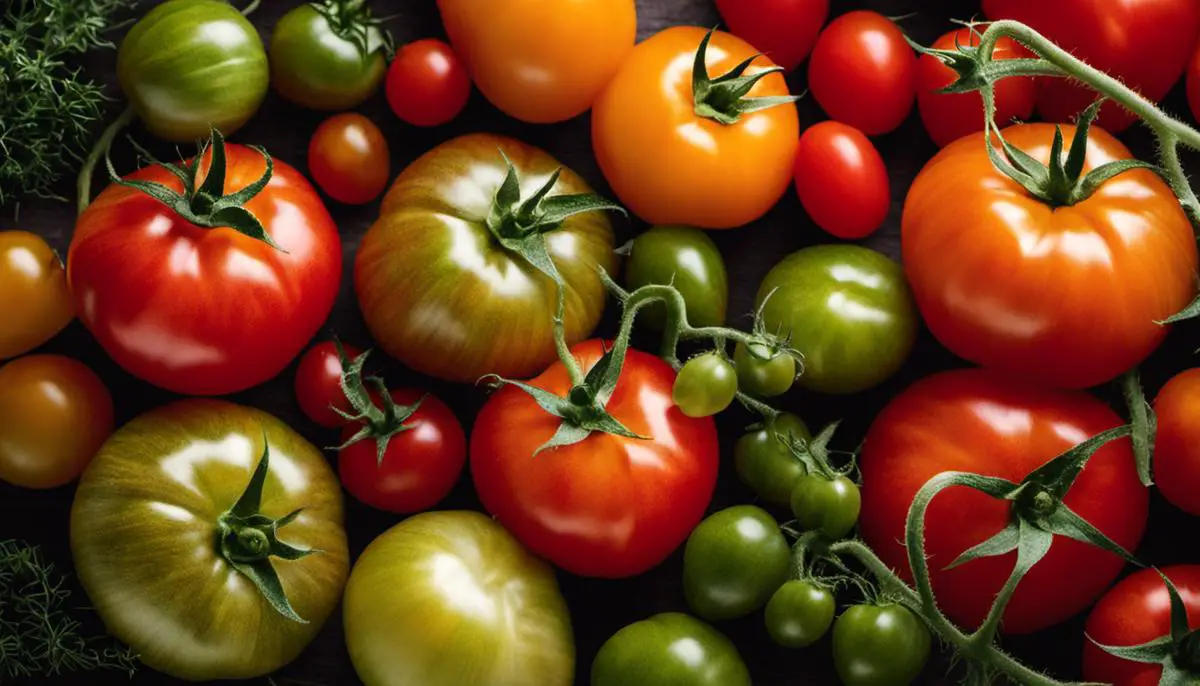As we slice through a ripe, juicy tomato for a salad or simmer a vibrant red sauce, it’s easy to forget the grand history and journey that this humble fruit has traveled over the centuries. The initial wild variants, for instance, hardly resembled the larger and richly flavorful tomatoes we know today. The transformative journey of the tomato, born from the wild shores of South America to becoming a global pantry staple, is captivating. This narrative starts from the origins and domestication process of tomatoes, tracks their cultural significance, explores the scientific strides in botanical and genetic modification, and finally lands into the modern world where their ubiquitous presence is felt around the globe.
Origins and Domestication of Tomatoes
The Historical Journey and Evolution of Tomatoes: From Domestication to Culinary Staple
To truly understand the history of the humble yet cherished tomato, we must delve into the annals of agriculture and human civilization. By way of preliminary introduction, the etymology of its name “tomato” stems from the Nahuatl word “tomatl”, rightly paying homage to its Mesoamerican roots.
Reader Poll: What online courses would interest you?
The domestication of the tomato can be traced all the way back to prehistoric South America, where it first found its roots among diverse civilizations, thousands of years ago. Scholars suggest that the tomato was first cultivated by the indigenous peoples of the Andean region, which includes modern-day Peru, Ecuador, Chile, and Colombia. The distinctions between wild and domesticated tomatoes are mostly in size and color, with the wild version significantly smaller and usually green or yellow.
As the waves of time rolled on, tomatoes journeyed into Central America, along the trade routes of ancient civilizations. By 500 BC, the use of tomatoes in cuisine and rituals was well entrenched among the Mayans and other local cultures.
The true transformation from wild to domesticated versions of tomatoes, however, occurred in Mexico. Evidences suggest that the domestication process must have taken place around 2,500–3,000 years ago, with the Aztecs playing a pivotal role. These early tomatoes were relatively small, resembling modern-day cherry tomatoes.
Subscribe to our newsletter!
Tomatoes made their grand entrance into Europe following the Spanish conquest of the Americas. This took place in the 16th Century, when Spanish conquistadors brought the plant back to the home territory. It was later brought to Italy, where it flourished in the Mediterranean climate, gradually evolving into larger and juicier varieties enjoyed today.
Contrary to the fondness of tomatoes in Southern Europe, Northern Europe held a deep-set suspicion about these glossy red fruits. There was a long-standing but erroneous belief that tomatoes were poisonous due to their resemblance and botanical linkage to deadly nightshade family. They were cultivated mainly as ornamental plants till the 18th Century and were then slowly integrated into the daily diet.
The quintessential evolution of tomatoes is a testament to the intricate interplay of varied factors including climatic changes, cultural influences, and human selection. This protracted process of evolution also involved the interaction of genetic mutations, leading to an expansive range of tomato species spanning different shapes, sizes, colors, and flavors.
From the essence of salsa in Mexican cuisine, the classic ingredient in the Italian pizza sauce to an indispensable component in Indian curries, the tomato has indeed voyaged far from its modest South American beginnings. This wondrous fruit in botanical terms, yet vegetable in culinary context, embodies the synthesis of nature’s bounty and human discovery, as it continues to play a pivotal role in countless cuisines across the globe.
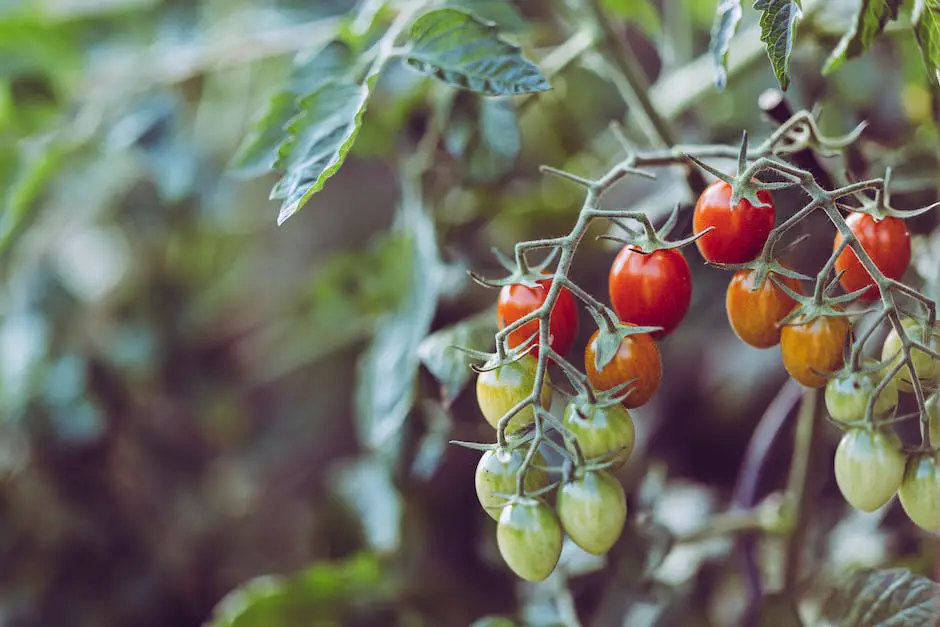
Cultural Significance of Tomatoes
Transitioning from their point of origin in South America, tomatoes embarked on a global journey that wrought immense cultural influence. Notably, it was through Europe that these luscious red fruits first received a global platform, paving the way for interaction with diverse cultures.
One cannot delve into the history of tomatoes without mentioning their contribution to Mediterranean cuisine. In Italy, the 16th century saw the tomato greeted with apprehension, being labeled a “poison apple” due to its resemblance to deadly nightshades. However, the resilience of Italian peasants, driven by stark economic realities, led to an evolving perception. By mid-18th century, tomatoes had become a staple, signifying warmth, passion, and simple rustic flavor, deeply entrenched in the soul of Italian cuisine. Italian food lore is famous for its tomato-centric recipes like the ragu sauce, marinara, and the globally beloved pizza and pasta.
Concurrent to their growing popularity in Italy, the tomato also began to seep into Middle Eastern cultures. The Ottoman Empire became a conduit, aiding the tomato’s journey into countries like Turkey, Iran, and Israel. In Middle Eastern cuisine, tomatoes became a ubiquitous ingredient; found in salads like Israeli salad or shakshuka, a dish of eggs poached in a spicy tomato sauce.
The 19th century brought the advent of Colonialism; European powers used tomatoes to engage with colonized nations, in what one could perceive as gastronomic diplomacy. Africa imbibed the tomato within its culinary lexicon, culminating in dishes like Nigerian jollof rice, a one-pot rice dish simmering in a tomato-based broth symbolizing unity and diversity.
Asia, with its expansive culture and varied climate, offered a fresh playground for the tomato. In India, the encounter with tomatoes facilitated an explosive symphony of flavors. Indian cuisine, known for its alchemy of spices, welcomed the tomato for its tangy brightness and versatility. Integral to chutneys, curries, and biriyanis, tomatoes have been instrumental in achieving the fragrant depth iconic to Indian dishes.
Meanwhile, in East Asia, countries like Japan and Korea assimilated the tomato with a distinctive flair. Japanese cuisine, known for its emphasis on seasonality and aesthetic presentation, utilized tomatoes for their vivid color and refreshing taste. Korean kimchi, famous for utilizing fermentation, explored new horizons with tomato kimchi, a testament to the fluidity of cultural exchange.
As we trace the culinary history of tomatoes, let us also acknowledge its influence beyond the kitchen. In modern times, they have emerged as symbols of health and wellness, recognized for their high content of lycopene (a potent antioxidant) and supporting cardiovascular health. Additionally, their ubiquity across cultures and cuisines underscores the fruits’ symbolic power—unifying disparate cultures through a shared ingredient.
Indeed, from their humble beginnings in South America to becoming a global culinary superstar, tomatoes have navigated through varied cultures, leaving an indelible mark. Their journey thus continually reminds us of the interconnected fabric of our global food history, bridging gaps and encouraging dialogue between cultures, one plate at a time.
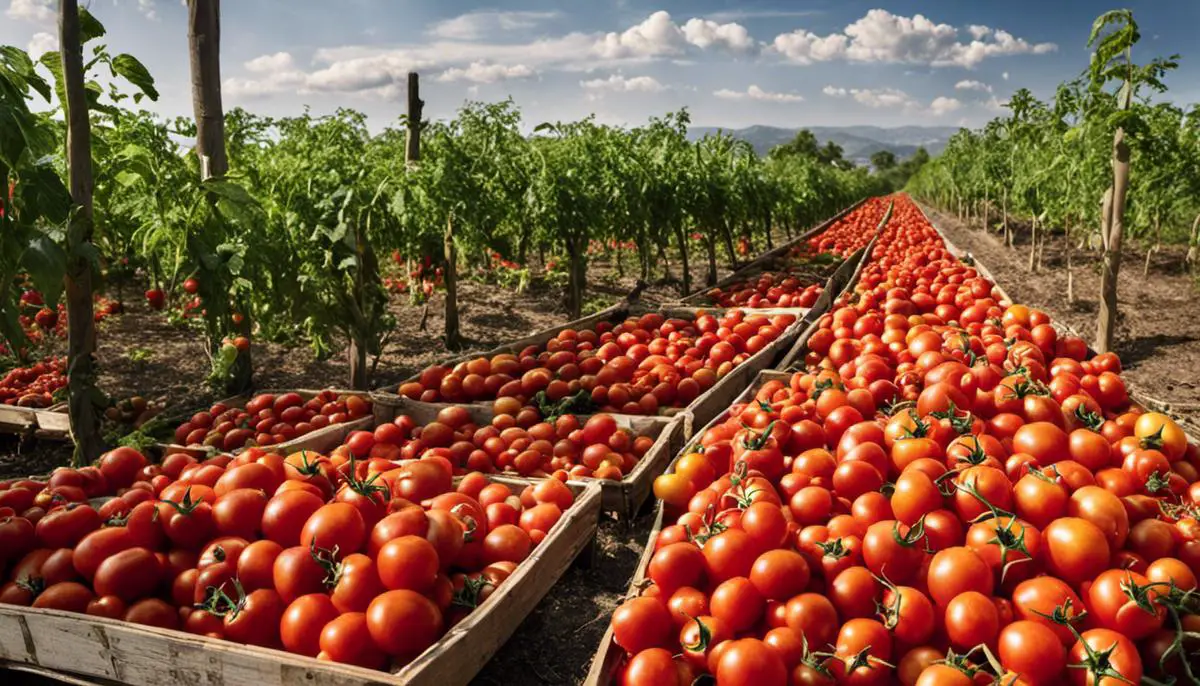
Botany and Genetic Modification of Tomatoes
Diving deeper into the historical narrative and tracing the journey through recent past and powered by unrelenting scientific research, the story of the tomatoes takes a turn entering into the past century.
Throughout the 19th and 20th centuries, tremendous strides were made in agriculture that drastically altered the manner in which tomatoes are cultivated and, consequently, the vast array of types available today.
The growth of industrial agriculture led to the advent of mechanization. Put simply, farmers began replacing manual labor with mechanized tools, facilitating higher yields and faster growth rates.
These developments were propelled largely through the invention of the tractor. First introduced in the early 1900s, the tractor catalyzed a seismic shift in farming methods. Crop cultivation was entirely changed with farmers now having the capability to tend to larger tracts of land far more efficiently.
Within this industrialization wave rode the tomatoes, benefitting from the shift towards large-scale farming.
Furthermore, scientific advances also influenced the cultivation of tomatoes. The advent of genetic modification techniques in the mid-20th century revolutionized tomato cultivation. With the ability to shape the genetic code of the tomato plant, scientists could create plants that were resistant to pests, diseases and harsh environmental conditions. This meant higher yields, fewer losses and, as a result, greater availability of tomatoes.
More recently, scientific research has led to the creation of tomato hybrids specifically designed to excel in certain environmental conditions. These hybrids have been bred to possess desirable traits—such as the capacity to withstand drought, heat, or high levels of salinity—that enable them to thrive where traditional plants may struggle. This has not only broadened the geographical areas in which tomatoes can be grown but also increased the varieties available.
One cannot neglect the role of technology in creating modern greenhouses, which provide a controlled environment for tomato cultivation irrespective of exterior climatic conditions. The stability offered by these technologically-advanced shelters has facilitated predictable and consistent tomato harvests, augmenting their availability year-round.
Simultaneously, the rise of the internet, artificial intelligence, and advances in data analytics continue to shape tomato growing global. Farmers now use technology to anticipate and address potential challenges, enhancing productivity and yield.
In sum, the introduction of the tomato to various corners of the world is a testament to human ingenuity and scientific progress. The continual evolution of the tomato, from wild varieties in the prehistoric times to the genetically enhanced hybrids bred today, serve as a potent reflection of the intricate dance between humanity and nature, science, and survival.
Indeed, every bite of a tomato is a morsel of millennia of human discovery, adaption, and innovation. Such is the power of this residence of nature’s prolific garden—the humble, vibrant, and ever-versatile tomato.
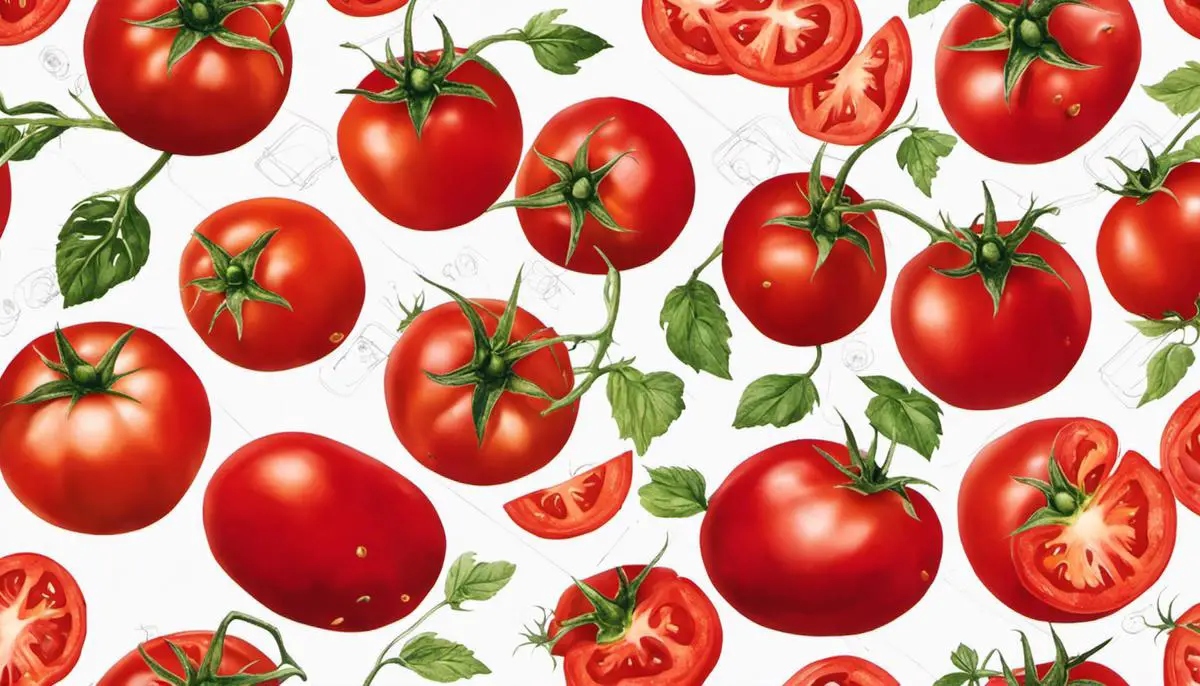
Tomatoes in the Modern World
The profundity of the tomato’s influence on modern society extends beyond its populism in global culinary practices to its impact on advanced agricultural technologies and economies alike. The process of tomato cultivation, an intricate science in itself, has spurred significant advancements in farming techniques and machinery, serving as a symbol of human’s capacity to transform nature for its sustenance.
Historically, the mechanization of agriculture, particularly the advent of the tractor, revolutionized tomato cultivation. The tractor, besides enhancing farming capabilities, also enabled large-scale expansion of tomato farms. This mechanization allowed for the growth and exportation of tomatoes at an unprecedented scale, directly aligning with the increase in global demand.
Meanwhile, tomato cultivation has also been a playground for advancements in genetic modification. Human curiosity spurred the creation of pest-resistant and disease-resistant tomato varieties, which reduces reliance on harmful pesticides and improves yield. The beauty of science unveils itself in these genetically engineered tomatoes that retain their original flavors while enhancing their resilience.
The development of hybrid tomatoes, designed specifically to excel in distinct environmental conditions, is another testament to human ingenuity and adaptability. Breeding these hybrids acknowledges the spectrum of climate zones around the earth, and the universal desire for this simple yet essential fruit.
The incorporation of technology into tomato farming further underlines the extensive role of tomatoes in modern society. The internet, artificial intelligence, and data analytics provide real-time insights for timely decisions, enhancing yields, and minimizing waste. Furthermore, the use of greenhouses provides a controlled environment for optimum tomato growth, catering to its year-round demand globally.
The future of this humble fruit holds immense potential. With each challenge faced, such as the current threat of climate change, the pursuit of providing the world with fresh tomatoes drives innovation. Be it the development of heat-tolerant varieties or innovative irrigation techniques to battle water scarcity, the journey of the tomato continues to inspire.
The tomato’s journey from its wild origins to being a globally recognized fruit not only signifies the adaptability of nature but also our ability as humans to harness its offerings. Exemplifying human ingenuity and scientific progress alongside ongoing evolution, the ubiquitous tomato breathes life into the intricate relationship between humans and nature. This delicate dance of growth, adaptation, and resilience underscores the immense value of this staple ingredient in our pantries and plates.
Ultimately, the tomato serves as a reminder that even the most commonplace items hold profound significance and have the power to shape, adapt to, and inspire advancements in humanity. This humble red fruit not only nourishes our bodies but also our intellect and creativity, truly underlining the wonder of its existence.
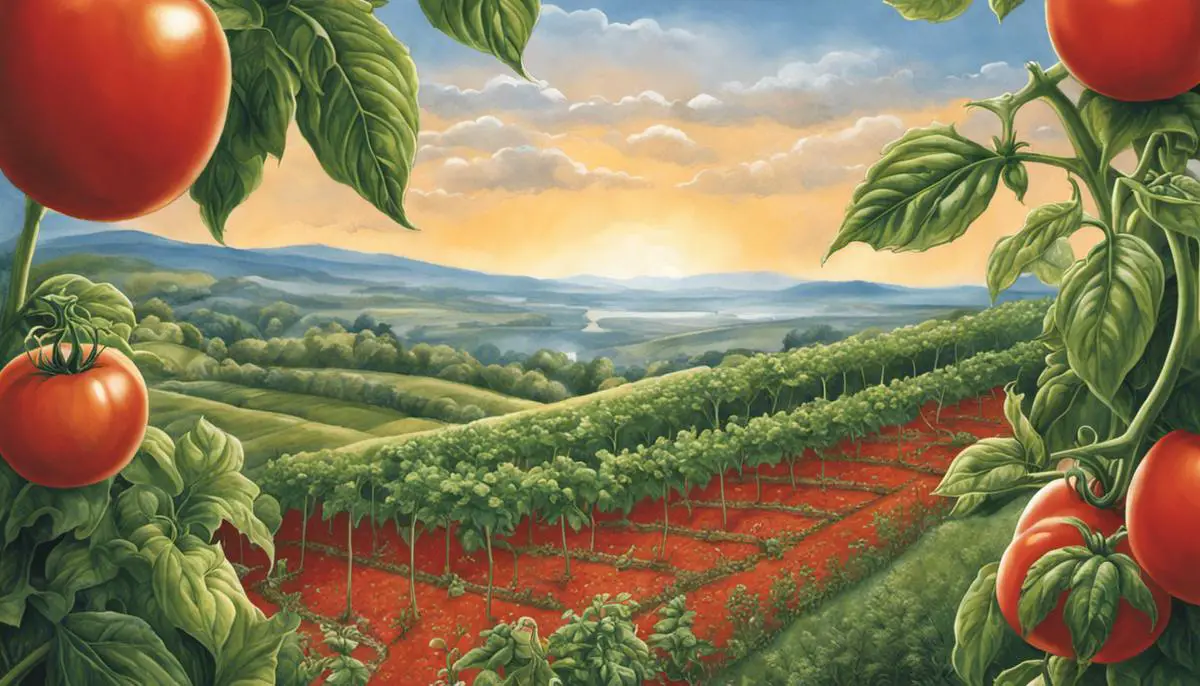
From the Spanish conquistadors to contemporary chefs, the tomato has traveled through time and space to seduce plates across the globe. Such has been its influence that, today, it is impossible to imagine a world without tomatoes. Their elemental role in both humble and haute cuisine, their myriad nutritional benefits and their economic significance attests to their continued relevance in a rapidly changing world. As we head into the future, tomatoes stay ever so important, tasked with feeding a growing world population while facing climatic and technological shifts. This constant evolution and adaptation dovetail intrinsically with the tenacious spirit of tomatoes, a testament to their enduring place on our tables and in our hearts.

